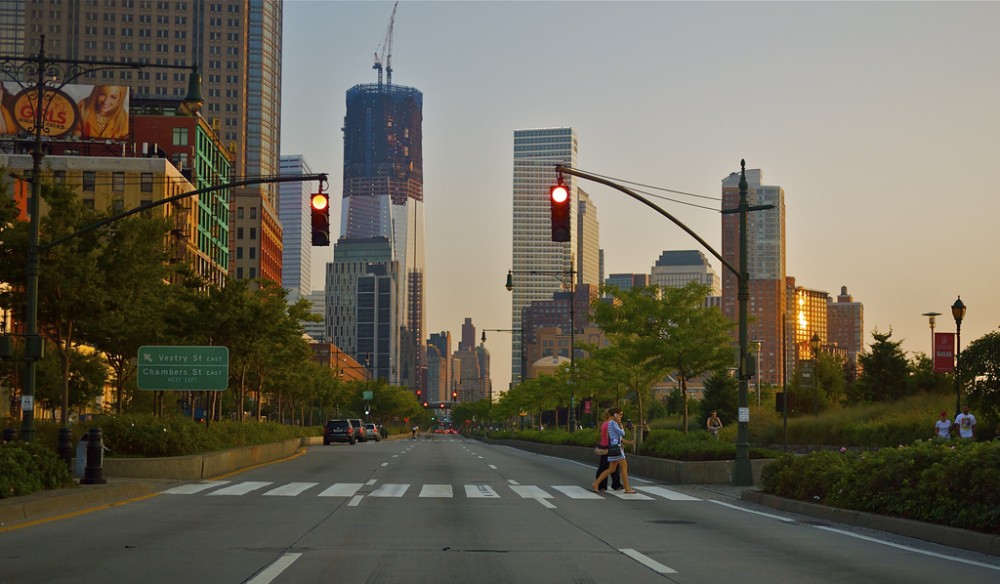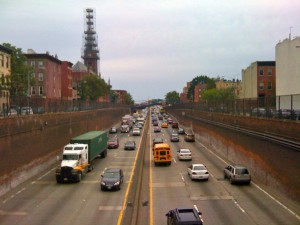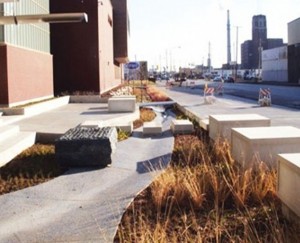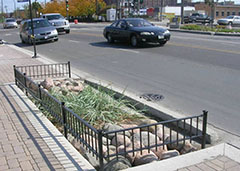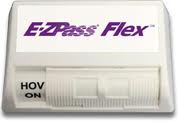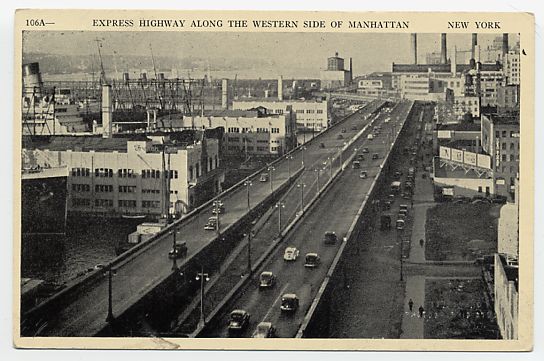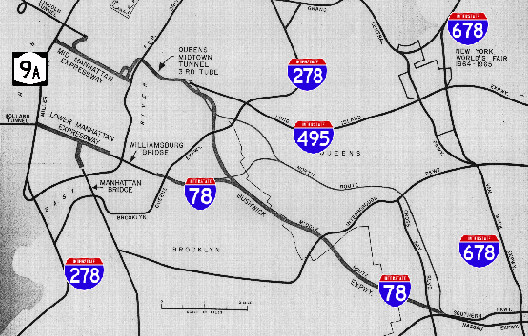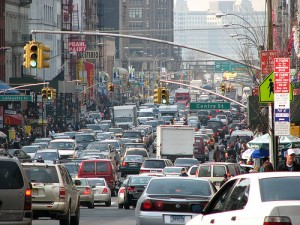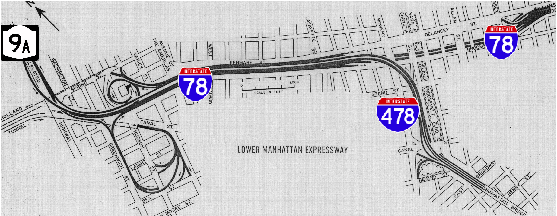In the 1950s, the construction of elevated and sunken highways marred many cities in the name of progress and the almighty automobile. The Brooklyn Queens Expressway in New York City is a great example. The picture on the right shows a portion of it in a trench and it is an eyesore that splits a neighborhood in half. But what if we could bring the community back together by incorporating a design that would cover it and provide additional green spaces while also enhancing the bicycle and pedestrian environment?
Some options were unveiled by artists that really should be considered by the NYSDOT to bring a community back together. Some of those options are shown below. Cities across the country should incorporate these designs for redeveloping areas that were mauled during the construction of these expressways.
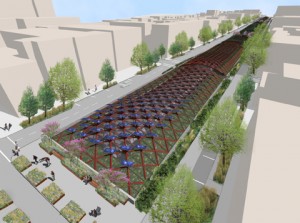
Artist rendition of creating a trellis Structure over the trenched rows which includes Photo-voltaic panels that generate revenue for the City. Photo-voltaic array could earn the city $USD312,500 per year through energy generation.
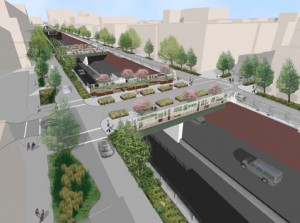
Artist rendition of maximum green. It creates a green streetscape with traffic calming, tree plantings, water sensitive design with the option for green screens/artistic fences.
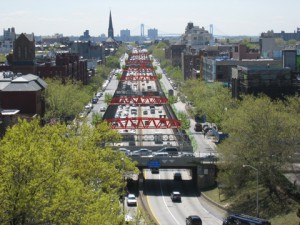
Artist rendition of creating “green machine” bridges equipped with greenscreen or acoustic panels, PV, and decorative lighting, with the option of adding treatments from the ‘Maximum Green’ concept.
